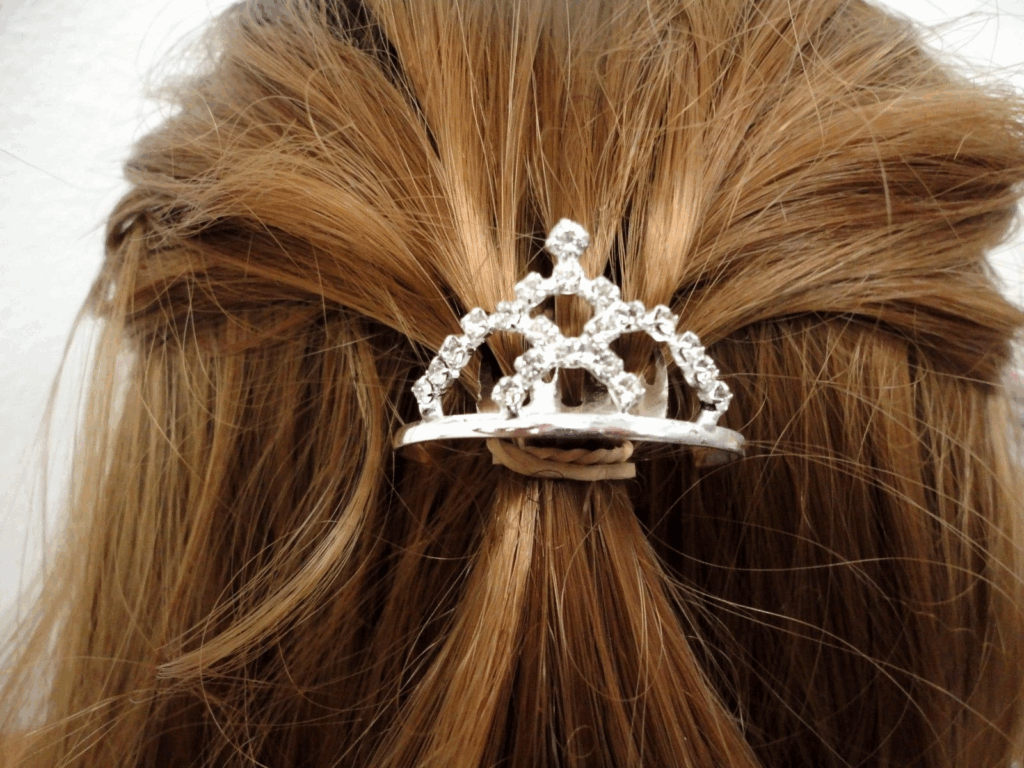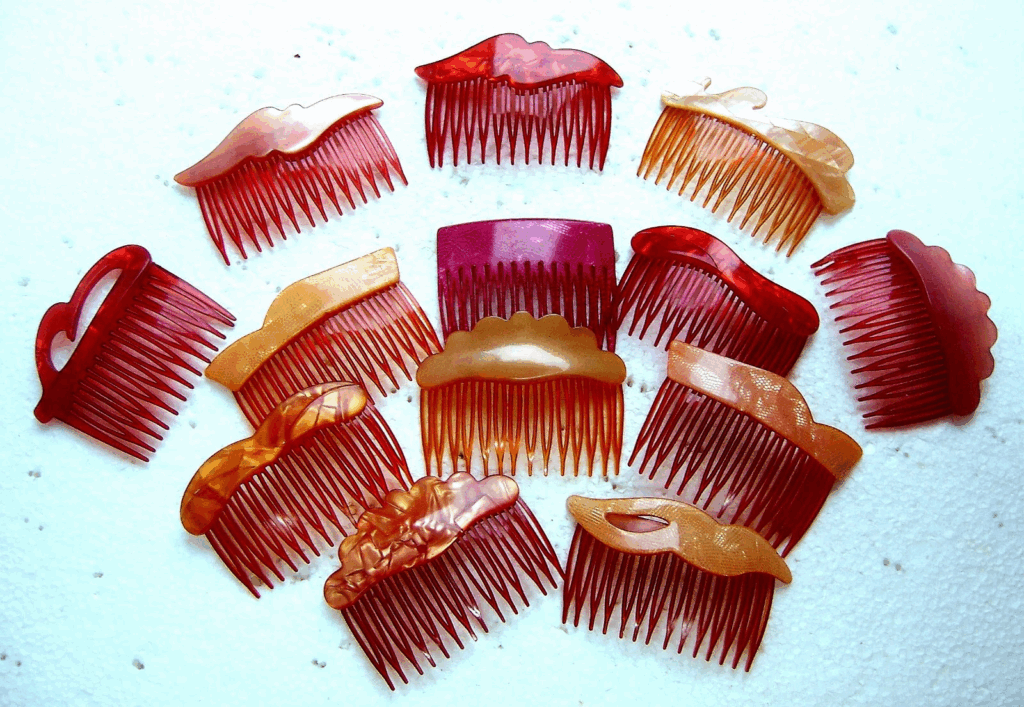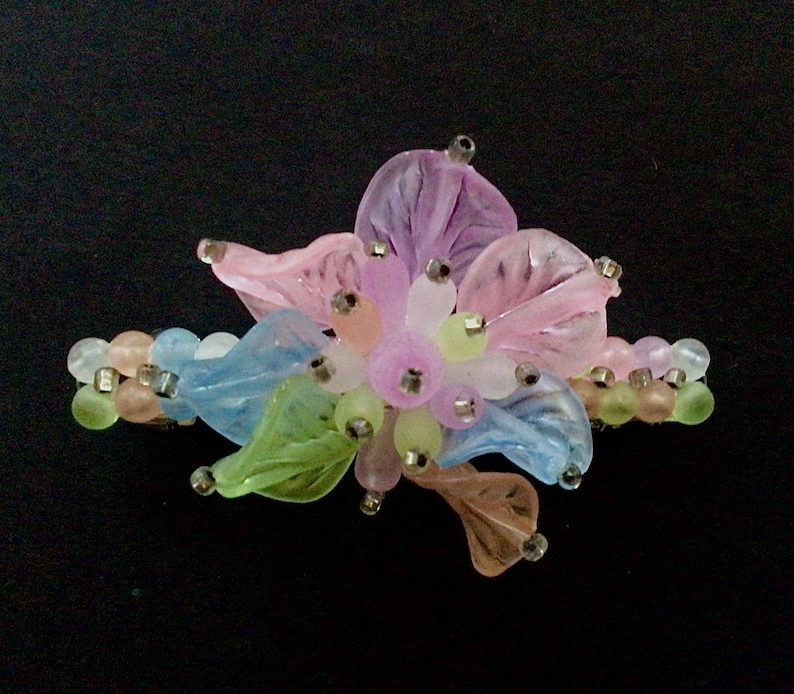10 Retro Hair Accessories That Are Suddenly Valuable
Retro hair accessories are having a major moment, and they’re now considered valuable pieces of fashion history. These once, popular items from past decades are now seen as rare and collectible treasures. Whether you find them tucked away in your closet or displayed on a shelf, these accessories hold a unique appeal. Their charm is in the nostalgia they bring, offering a glimpse into past trends.
This post may contain affiliate links, which helps keep this content free. Please read our disclosure for more info.
Tortoise-shell barrette

This accessory from around the 1960s features a faux tortoiseshell plastic body, often with a gold-tone metal clasp or accent. The warm amber pattern and mid-century styling give it charm, and because genuine tortoiseshell was phased out, these pieces feel rare. Today, a good example in excellent condition might fetch $25 to $40. Condition matters a lot – scratches, faded colors, or a worn clasp will reduce value. If you find one marked Made in France or West Germany, that can add a small premium.
In addition to its visual appeal, this barrette is durable and functional. It often holds a half-up hairstyle or heavier ponytails better thanks to its size. The plastic used back then tends to be thicker and weightier, adding to the feel of quality. If the clasp mechanism remains tight and intact, that’s a big plus. Keep an eye on vintage shops for these, sometimes tucked away among costume jewelry and forgotten hair kits.
Celluloid hair comb with rhinestones

From around the 1920s-30s era, this comb is made of early plastic (celluloid) styled to mimic tortoiseshell or other decorative finishes, often embellished with small rhinestones. Because celluloid is flammable and fragile, surviving examples are quite special. The estimated value for one in good condition is around $60 to $90. Signs of loss of shape, cracking, or missing stones can drop that value sharply. Provenance or maker marks can raise the price further.
Such combs were often worn tucked into an updo or toward the back of the head during formal occasions. If you find one designed with a fan-shape or ornate scrollwork, it tends to attract more attention. Protect it from heat and humidity. When buying or storing one, it’s wise to check for signs of warping or chemical smell These pieces are small but carry a lot of vintage character.
Designer logo headband from the 1990s

A wide plastic or fabric headband bearing a luxury or designer logo, popular in the late 1990s, has gained interest among collectors of fashion memorabilia. A well-conditioned piece may fetch $50 to $100 depending on brand and rarity. Faded fabric or missing branding will lower value. Original packaging or tags help significantly.
These headbands were often worn with minimalist outfits to show off the logo; thus, they reflect both branding and the styling of their era. When checking one, inspect the underside for wear (hair oils can degrade fabric) and any logo embossing that might be worn down. Branding from less common designer lines often catches collectors’ eyes. Since these pieces straddle fashion accessory and nostalgia, they can appeal to both vintage and designer fans.
Oversized steel snap clip from the 1980s

During the 1980s, large metal snap-clips became fashionable. A well-made example in original packaging or from a known brand may go for around $30 to $50 today. Without original packaging or if the finish is worn, value could be down in the teens. Uniform condition on the metal and clean mechanism raise the appeal.
These clips were commonly used to pin back large sections of hair or to hold side sweeps in place. When evaluating one, check the spring strength and any branding or hallmark. Colour plating (gold-tone vs silver-tone) can matter for collectors. Because metal clips are less fragile than plastic, well-preserved ones often retain functionality and aesthetic appeal.
Pearls and enamel bow barrette, circa 1950s

A decorative barrette from the 1950s featuring faux pearls, pastel enamel bow design and gold-tone metal is a classic accessory. These pieces can fetch roughly $40 to $70 if well kept. Any damage to the enamel or missing pearls will lower value significantly. If the clasp is original and marked, that adds to the worth.
These were worn in more formal styles-half-ups, curls pinned at the side, or as accent pieces for dresses. When you find one, check for signs of wear under the pearls. The size matters: larger pieces designed for full hair hold tend to be more collectible than the smaller, simpler ones. Maintain them with care: avoid humid storage and clean gently to preserve enamel.
Rhinestone tiara-style hair clip from the 1980s prom era

In the late 1980s, prom and formal-event styling often included rhinestone hair clips shaped like mini tiaras or crowns. These pieces can sell for around $35 to $60 if the stones are intact and sparkle still. Missing or cloudy stones or bent metal settings push value down. The original box or store tag adds value.
These clips were made for special occasions and often not used daily, meaning well-preserved examples exist. Check for rust or oxidation on the metal back piece and ensure the pin or clasp still functions smoothly. If the rhinestones are set in high-quality wiring rather than glued, that tends to indicate better craftsmanship and higher value. Because they tie into formal wear, they often appeal to both accessory collectors and costume/home-decor seekers.
1990s designer scrunchie set

Although lots of scrunchies sell at modest prices, a set from a recognized designer brand (late 1990s) in original packaging may go for roughly $40 to $80. Common scrunchies from that era fetch much less (often under $15) so the brand and condition make the difference. If the elastic is still firm and packaging intact, you’re looking at the upper end of that range.
Scrunchies represent the ponytail boom of that era, and when branded they appeal to nostalgia and designer-collectible niches. When evaluating, check the fabric type, branding/tag presence, and no fading of colour. Keep them away from moisture and compression (which can flatten them). Packaging adds the heritage story and supports higher value.
Mid-century acrylic side comb

A side comb crafted from acrylic in the 1940s or 1950s, often with a decorative motif (flowers, leaves), is now viewed as a collectible item. A good one might fetch around $50 to $80 depending on design and condition. Acrylic of that era tends to lose clarity, so those that remain sharp are in demand. Damage like missing teeth or discoloration reduces value.
These were used to pull back one side of hair and were especially popular when women wore waves or soft curls. When checking one, look for heat warping (the comb teeth should stand straight) and surface haze. Patterns or motifs that reflect the era (for example, flower and leaf designs) add to interest. Because these were everyday accessories rather than ultra-formal pieces, finding examples in usable shape is possible, which adds to their charm.
Gold-tone double-prong hair fork from the 1970s
In the 1970s, hair forks made of metal rather than plastic became a stylish way to hold buns and chignons. A gold-tone double-prong fork with decorative end caps may now sell for around $30 to $45. If the gold-tone plating is peeling or the prongs bent, value goes down. Original packaging or brand embossing helps.
These forks held large buns or twisted updos typical of the era, and their structural utility gives them staying power. When evaluating such a piece, ensure the prongs are aligned and the decoration is both intact and original. Although simpler than some elaborate barrettes, the metal forks have quiet elegance and often appeal to hair accessory collectors who like functional vintage pieces.
Lucite flower hair slide from the 1960s

This piece comes from the 1960s and features a clear or tinted Lucite flower motif that slides into the hair via a metal clip or comb base. A clean example might fetch about $25 to $40. If the Lucite is scratched or the flower design has lost definition, the value declines. Metal parts should be rust-free and intact.
Such slides were often used to decorate half-up hairstyles or to clip small sections of hair in playful styles. Because Lucite retains clarity relatively well if treated properly, these pieces can remain attractive decades later. When seeking one, look at the edges of the Lucite for signs of chipping or clouding. The flower motif gives it decorative appeal beyond pure functionality.
Celluloid French side comb

Another piece from the 1950s, this is a side comb made in France from celluloid plastic, often with a tortoiseshell look or amber shading. These combs may fetch in the ballpark of $45 to $70 if condition is strong. Because Made in France markings are less common than mass-made pieces elsewhere, such provenance matters. Celluloid’s vulnerability (to heat, light, deterioration) makes intact examples especially desirable.
These side combs were worn to pin back sections of hair and were often paired with elegant outfits. To assess one, check for warping or cracking, especially near the comb teeth base. The finish should still show depth of colour rather than flat faded tones. Since side combs are less bulky than barrettes, they appeal to collectors compared to more obvious larger hair accessories.
This article originally appeared on Avocadu.
